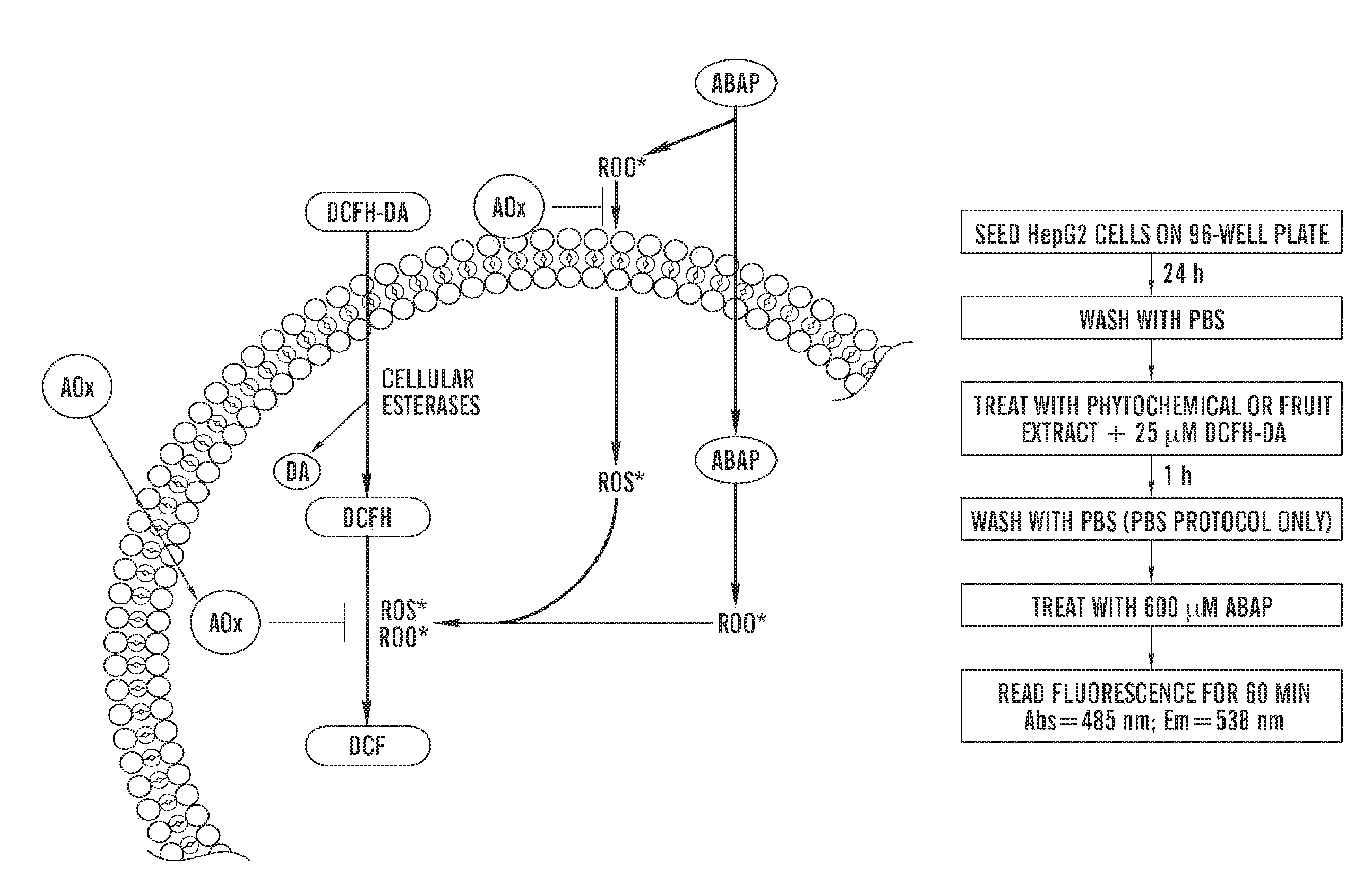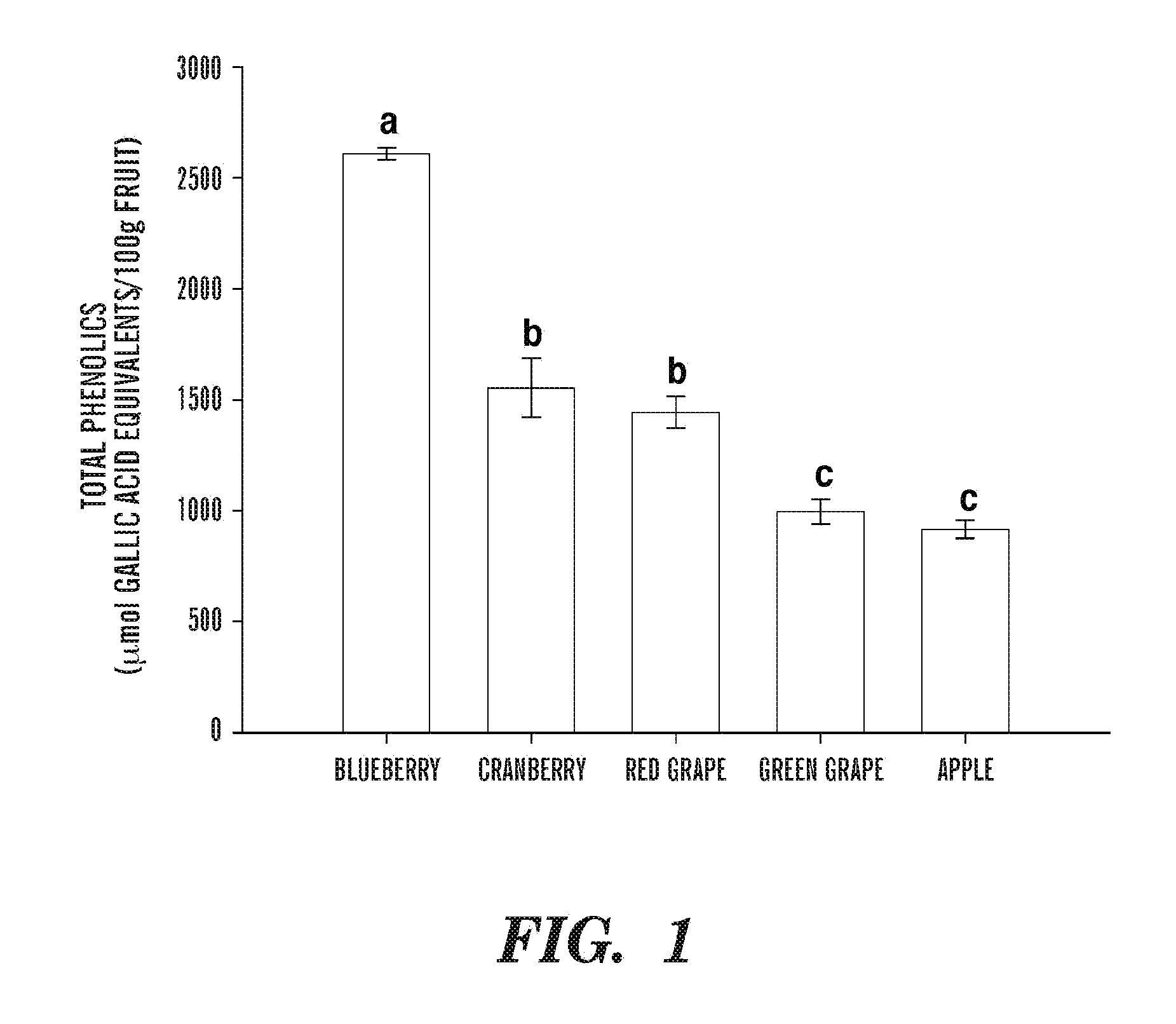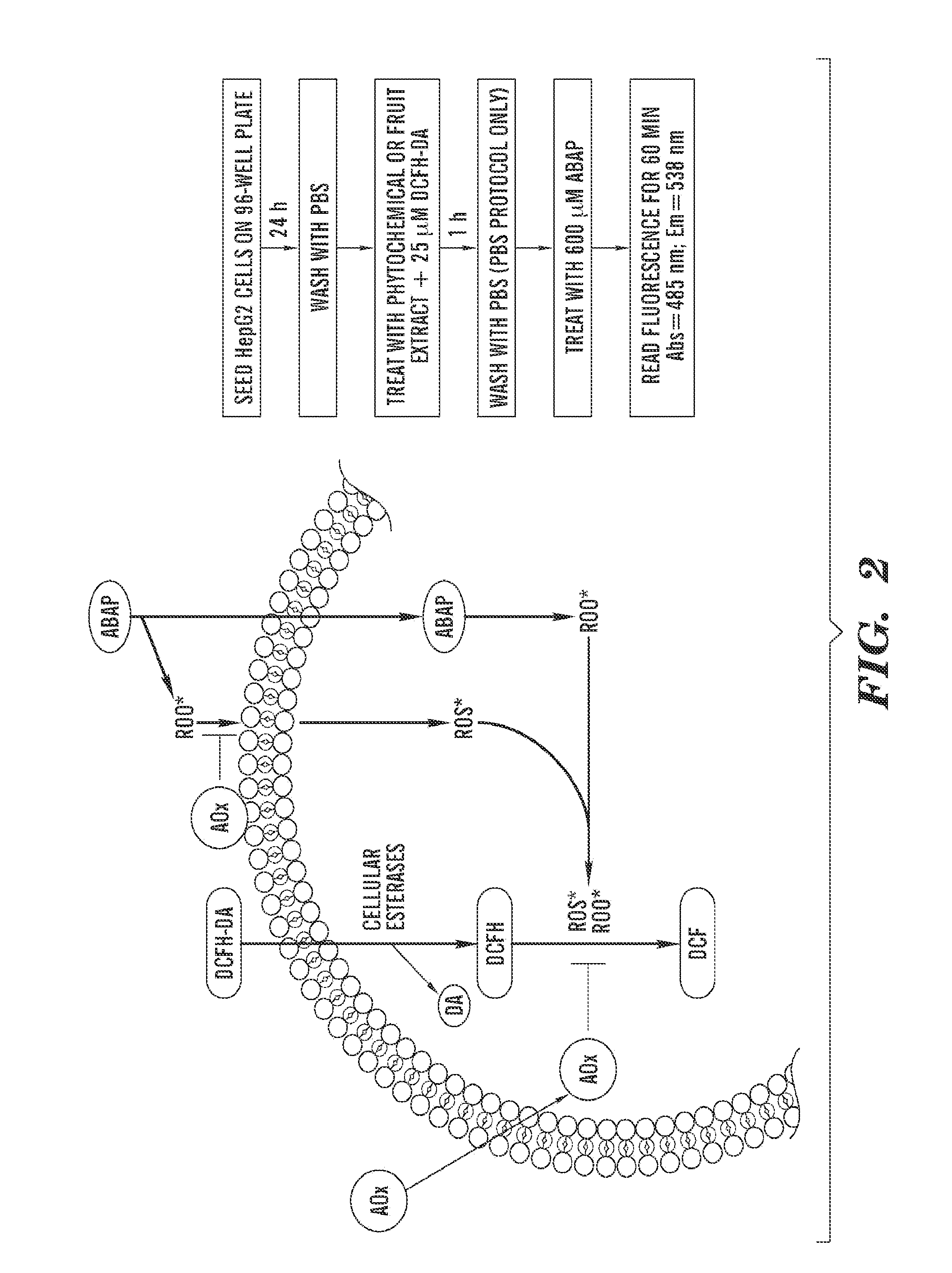Cellular antioxidant activity (CAA) assay
- Summary
- Abstract
- Description
- Claims
- Application Information
AI Technical Summary
Problems solved by technology
Method used
Image
Examples
example 1
Cellular Antioxidant Activity Assay for Assessing Antioxidants, Food and Dietary Supplements
A. Materials and Methods
Chemicals
[0166]Folin-Ciocalteu reagent, 2′,7′-dichlorofluorescin diacetate (DCFH-DA), ethanol, glutaraldehyde, methylene blue, ascorbic acid, caffeic acid, (+)-catechin, (−)-epicatechin, (−)-epigallocatechin gallate (EGCG), ferulic acid, kaempferol, luteolin, myricetin, phloretin, quercetin dihydrate, resveratrol, and taxifolin were purchased from Sigma-Aldrich, Inc. (St. Louis, Mo.). Gallic acid was obtained from ICN Biomedicals, Inc. (Aurora, Ohio). Dimethyl sulfoxide and acetic acid were obtained from Fisher Scientific (Pittsburgh, Pa.) and 2,2′-azobis (2-amidinopropane) dihydrochloride (ABAP) was purchased from Wako Chemicals USA, Inc. (Richmond, Va.). Sodium carbonate, acetone, and methanol were obtained from Mallinckrodt Baker, Inc. (Phillipsburg, N.J.). The HepG2 cells were obtained from the American Type Culture Collection (ATCC) (Rockville, Md.). Williams' Med...
example 2
Cellular Antioxidant Activity of Common Fruits
[0204]Example 2 shows that the methods described herein are useful for evaluating the antioxidant activity of common fruits consumed in the United States.
A. Background
[0205]Free radicals are reactive molecules with unpaired electrons that are able to exist independently. Endogenous metabolic processes, especially in chronic inflammations, are important sources of free radicals (Liu, R. H. et al, (1995) Mutat. Res. 339(2):73-89), which can react with and damage all types of biomolecules, lipids, proteins, carbohydrates, and DNA (Ames, B. N. and Gold, L. S. (1991) Mutat. Res. 250(1-2):3-16). If damaged DNA is left unrepaired, and the mutated cell gains the ability to survive and divide aberrantly, it may become cancerous. Thus, an increase in antioxidants, which can scavenge free radicals, may be a strategy to prevent cancer cell initiation, an important beginning stage of carcinogenesis.
[0206]Doll and Peto (Doll, R. and Peto, R. (1981) J....
example 3
Structure-Activity Relationships of Flavonoids in the Cellular Antioxidant Activity Assay
A. Background
[0230]Cancer is the second leading cause of death in the United States (Minino, A et al (2006) In National Vital Statistics Reports; National Center for Health Statistics: Hyattsville, Md., Vol. 54). Cancer is a disease in which abnormally high proliferation of mutated cells occurs. Oxidative stress may be the most important factor causing oxidative DNA damage that can eventually lead to mutations if left unrepaired (Ames, B. N and Gold, L. S. (1991) Mutat. Res. 250(1-2):3-16). Consumption of fruits and vegetables has been linked to reduced risk of cancer in several epidemiological studies (Steinmetz, K. A. and Potter, J. D. (1996), supra; Block, G. et al (1992) Nutr. Cancer 18(1):1-29). The dietary phytochemicals in fruits and vegetables are likely responsible for decreased cancer risk by reducing oxidative stress and modulating signal transduction pathways involved in cell prolife...
PUM
 Login to View More
Login to View More Abstract
Description
Claims
Application Information
 Login to View More
Login to View More - R&D
- Intellectual Property
- Life Sciences
- Materials
- Tech Scout
- Unparalleled Data Quality
- Higher Quality Content
- 60% Fewer Hallucinations
Browse by: Latest US Patents, China's latest patents, Technical Efficacy Thesaurus, Application Domain, Technology Topic, Popular Technical Reports.
© 2025 PatSnap. All rights reserved.Legal|Privacy policy|Modern Slavery Act Transparency Statement|Sitemap|About US| Contact US: help@patsnap.com



